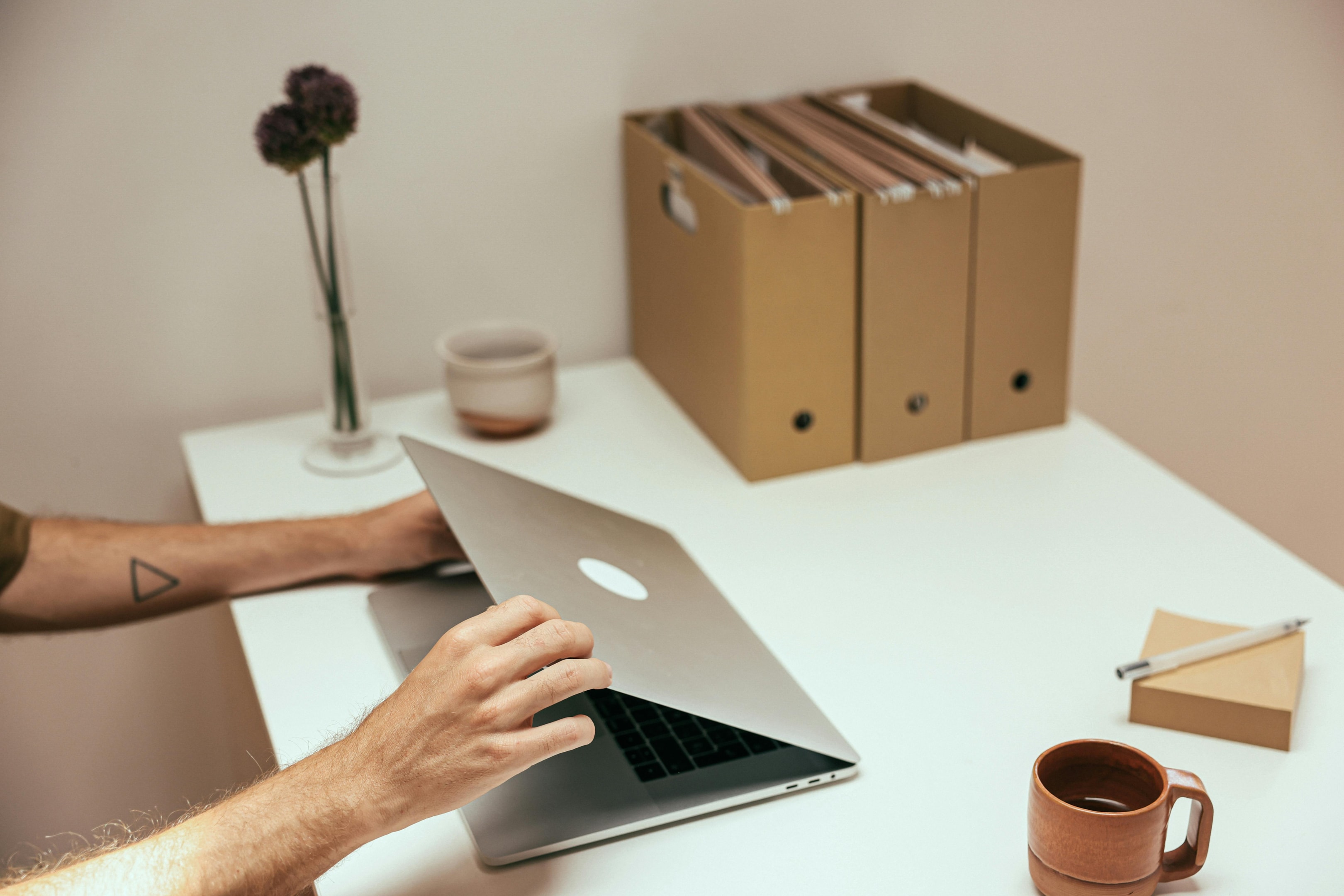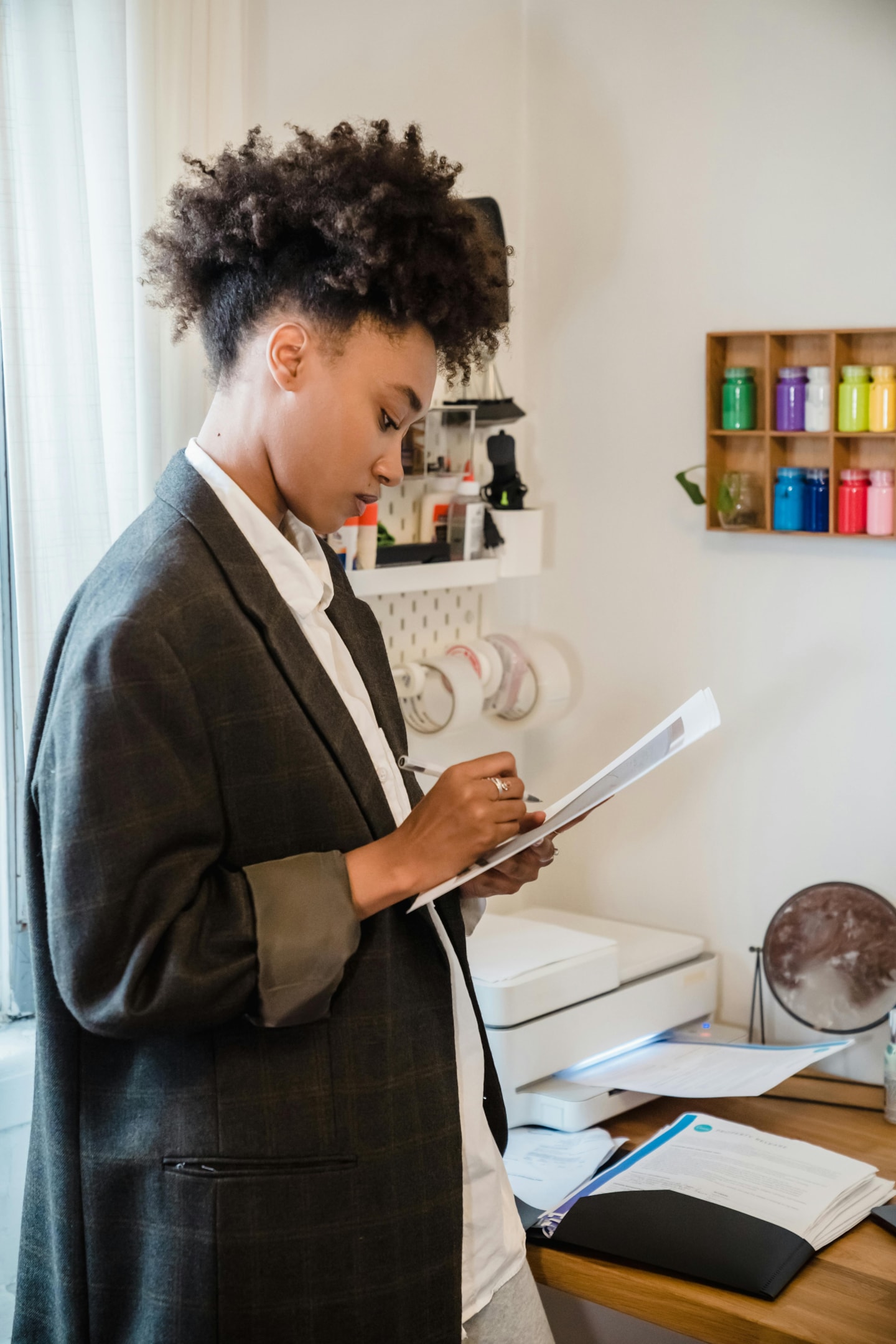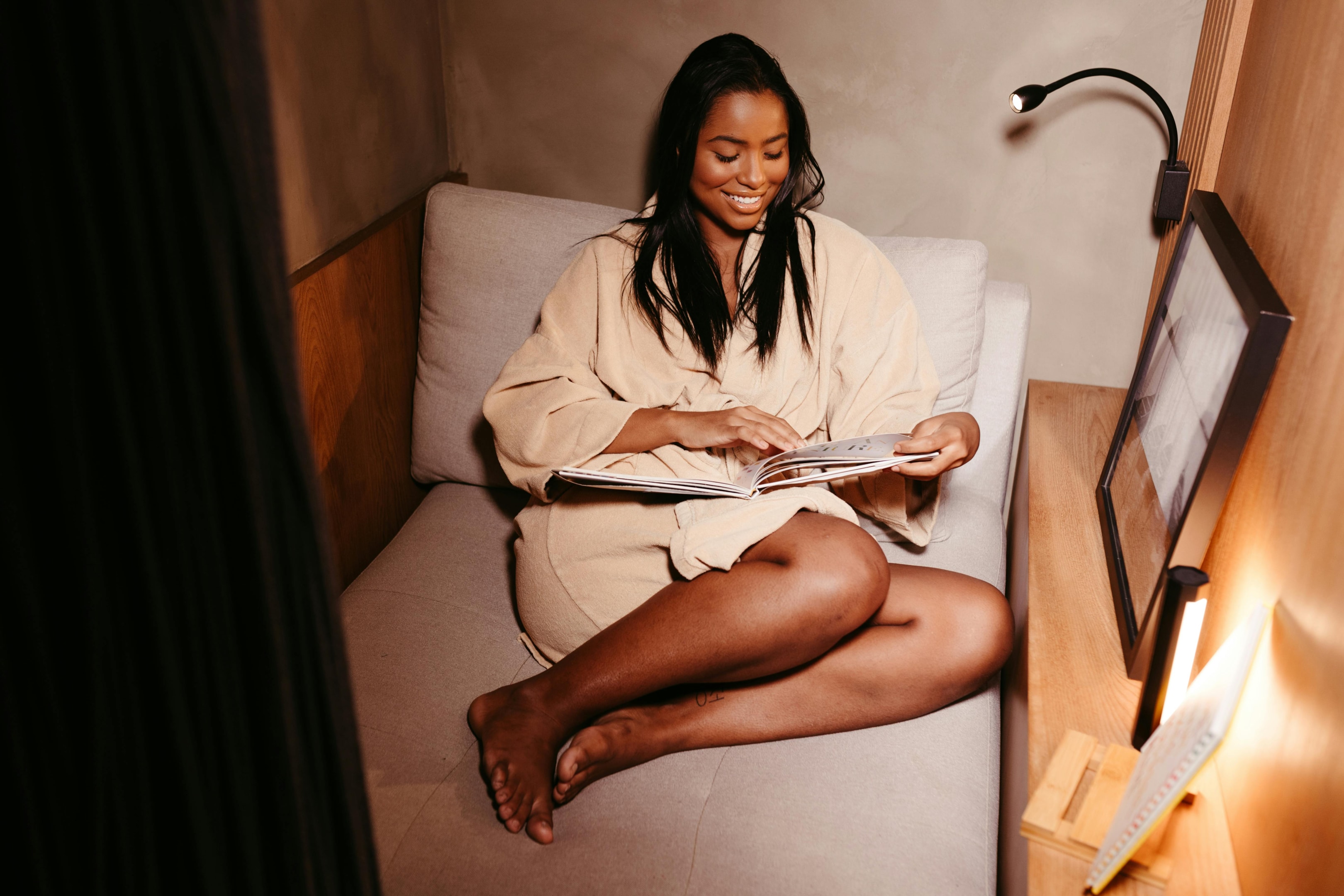For some people, the end of the work day is their favorite part. They leave feeling energized, optimistic, and ready for the next thing.
But for most people, the end of the day is a blurry kind of zombie walk from their desk to their real life.
And of course, there are often factors outside of our control, like working conditions and the state of the economy, but there is something we can do to make a cleaner break from our jobs.
What is an End of Day Routine?
An End of Day (EOD) routine is a set of activities or habits that you perform at the end of your workday to help you wind down, reflect on today, and prepare for tomorrow.
These activities might include journaling, tidying up your work space, updating logs and trackers, or relaxation techniques.
It’s different from an actual workday routine–you could one or the other, or both! Or neither if you like to be upset.

Why should you have an End of Day Routine?
An EOD routine can improve your life and wellbeing by bringing more intentionality and order to your day. Here’s how:
Enhance productivity
EOD routines generally involve some sort of reflection, planning, and/or scheduling. Having this dedicated time daily can keep you focused and on track, enhancing your productivity through the next day.
Reduce stress & improve mental health
Taking a moment to breathe and assess your day before shutting it down and wrapping up can lower stress, increase motivation, and maintain focus on long-term goals.
Plus, these routines often (and should) involve a grounding activity, like journaling, meditation, or other mindfulness practices.
These habits also help to manage stress, give space for the day’s feelings and struggles, and keep on top of your goals.
Create a smoother transition between work and life
Your EOD routine can be the clap shut for your work mode, giving a definitive end to work and helping you transition into the rest of your day.

It can be difficult to put a project down after hours, especially if you work remotely, and your home is also your office. Creating a routine for winding down and shutting off work can stop us from muddying the lines between and really focus on what’s in front of us.
Balance work and life
Similarly, packing your work up into a little box and tying the bow can help you unclip from it, which can enable you to better enjoy your evening, focus more, and feel satisfied with your work.
An EOD routine can help enhance productivity, reduce stress, and create a smoother transition and firmer line between work and personal life.

How to Create Your Perfect EOD Routine
Everyone’s perfect routine is unique to them, so you’ll need to do some introspection! Here are the steps to take.
1. Assess your needs
Let’s check in! What is your current EOD routine? It might just be slapping your laptop closed and screaming, and that’s fine. What would you rather be doing to close your day?
How do you feel at the end of your work time? Exhausted, wound up, stressed, angry, relieved? This information could be a good guidepost to get you started.
What makes you feel prepared in the mornings? What can you do to make future you’s life a little easier? Think of how you can set up an easier tomorrow for yourself.
What could let you stop thinking after work? At the end of the day, we’ve usually hit some level of decision fatigue. We might be worried about unfinished tasks, so we blend the line between work and home too much trying to finish up.
A simple planned transition from work to life allows you to go through the motions without getting caught up or needing to make another decision.
You can also consider what activities help you unwind. We’ll have a list below if you need ideas.

2. Set goals
Determine what you want to accomplish with your EOD routine. This could be reducing stress, getting better organized, increasing efficiency with your workflow, or improving your work-life ratio.
3. Make to do list of activities
Now select the activities you’d like to include in your routine.
Keep in mind that you can (and probably should) tweak this later on as you learn more about your process.
You might find that some activities are a waste of time for you or spot weak areas you could strengthen with a new habit.
Here are some basic activity ideas to get you started.
Review. Take a minute to look over your day. What did you accomplish? What did you find challenging? What ideas do you have for making those challenges easier to overcome? This can be a quick glance over the things you did today, or a more in-depth self-report.
Plan for tomorrow. Write down tasks and set priorities for the next day. Again, this can be a quick list you jot down, or something more involved, depending on factors like the time you’re wiling to invest in your routine.
Tidy up. Clean and organize your workspace. Sitting down to a neat workspace tomorrow morning will give you a stronger start to your day. Keeping up with it for just a minute or two a day can keep you from ever having to Clean your office.
Update trackers. If you’re a tracker jacker, go through and update your trackers, journals, or logs.
Tie up loose ends. If you have small tasks hanging that can be finished quickly, go ahead and wrap those up for a cleaner break the next day.
Backup. Do you have any important documents or files that need to be secured? Backup and save any work that you don’t want to lose.
Anti-backup. It can also be helpful to intentionally delete files you’re no longer using. Keeping up with this can prevent you from needing to dedicate significant time to clearing out your computer.
Shut it all down. Turn off, sign out, or step away from work-related devices. This is important to create boundaries between your personal and professional life.
If your work computer is also the one you have for personal use, try creating separate desktops or user accounts to build separation.
Relaxation activity. Choose activities that help you unwind, such as stretching, reading, walking, or meditating. Ideally, this activity does not involve screens.
Gratitude practice. Reflect on positive aspects of your day to end on a positive note. You might journal these, or just take a minute to notice them.
You don’t have to do all of these activities, obviously. Take what’s helpful and create your own schedule!
It can be helpful to batch smaller tasks into the same space of time, especially if they’re similar to each other. This can stop you from interrupting your deep work later.
What is deep work? Steps and strategies.

4. Create a schedule
After you have your activities selected, create an actual schedule for them. This might be giving yourself specific times to perform each step, or just planning to take 15 minutes after work to wrap up. I do recommend going in the same order each day (especially if you can incorporate habit stacking) to maintain consistency and help it stick.

5. Make it yours
Some genuinely worthwhile tasks aren’t fun in the moment (maybe mindfulness practices, tracking, adhering to the two-minute rule), but they payoff for your overall wellbeing and productivity. If you’re VERY averse to a certain task, that might be the one you need the most.
Outside of that, include things that you enjoy!
If a walk or guided meditation isn’t for you, you might prefer something like sitting on your porch, throwing a frisbee with your dog, bird watching, weeding your garden, weeding your lungs.
If you don’t love journaling, just keep a log of a few things instead of writing longhand (like a few gratitudes, your To Done list from today, your to-do list for tomorrow).
As you experiment and tweak your routine, try to stay in touch with what actually makes you feel better and lean into those activities.

6. Stay consistent
An EOD routine is a habit, and as such, it requires consistency to be effective. Create a routine that you can really follow, and one that you’d like to!
If you’re worried you can’t stay consistent every single day, you can do the same trick we do for morning routines, which is to build two routines. One is for most days, and the other is a minimized routine for days that you just can’t make it happen.
You could compare this to creating a habit of daily exercise. On a regular day, you might do 20 minutes of cardio, 20 minutes of weights, and 10 minutes of stretching.
If you’re feeling too tired, sick, or incredibly unmotivated, you can just do your stretches so you’re still performing the act of bringing your body to your workout area and doing something.
For a medium day, maybe that would look like hopping on the treadmill for a Sabrina Carpenter strut playlist
Having a lighter version of routines allows you to maintain the consistency and habit while leaving room to give yourself grace on bad days.
So when you make your routine, take note of which tasks you could simplify for your minimized EOD routine.

7. Review and adjust
Test it out and see how it goes, then perfect it! You probably won’t nail it your first try, so keep an open mind and experiment a little.
After you’ve built your ideal routine that makes perfect sense on paper and should help you reach your goals, you might try to implement and realize it’s just not working.
Troubleshoot the basics–do you need a better plan, do you need to tweak your routine, do you need a new tool or software?
If you can’t make it work, reel it back to one item! You can choose the simplest or the most effective task from your list, and just focus on staying consistent with it for a few weeks.
After you’ve mastered it, you can habit stack one item at a time until you’re performing your desired routine.

What if I have an incomplete task at the end of the day?
Depending on the urgency of the task, you might take an extra few minutes to wrap it up, or put it at the top of your to do list for tomorrow.
End of Day Routine Example
Your routines will be unique to you, your preferences, and your goals, but if you’re drawing a complete blank on how to structure an EOD habit, here are some examples.
You could go for a timed routine, like this:
- 4:45 – review day and weekly goals
- 5:00 – clear/save files, wrap up conversations
- 5:20 – update calendar and tomorrow’s to-do list
- 5:30 – tidy desk
- 5:45 – bring dishes from lunch to the kitchen; load dishwasher
- 6:00 – meditate
And the Easy Day version could look like:
- 5:00 – review day and make tomorrow’s to do list
- 5:10 – bring your dirty dishes to the kitchen
- 5:15 – clear/save files and tidy desk
- 5:20 – meditate
I don’t personally jive with timed tasks, so mine is more of an activity list that happens whenever I clock out:
- Review my work day
- Make a plan for tomorrow
- Close out of programs and delete files I no longer need
- Shut everything down
- Reset my desk
- Take a walk!
That all takes me about 10 minutes, not including the walk. And even with such simple activities, some days I just walk away from my desk to lie facedown on the floor. Gotta give yourself permission for the occasional lying facedown day.

An end of day routine can help you wrap up your day satisfactorily, keep organized, produce less stress, give you more time for deep work, and increase your productivity. An even more important routine to establish and customize is a morning routine, so read about creating your own!
End of Day Routine Checklist
Grab this free end of day routine checklist so you can keep it somewhere visible and never have to wonder what to do next!
5 Comments